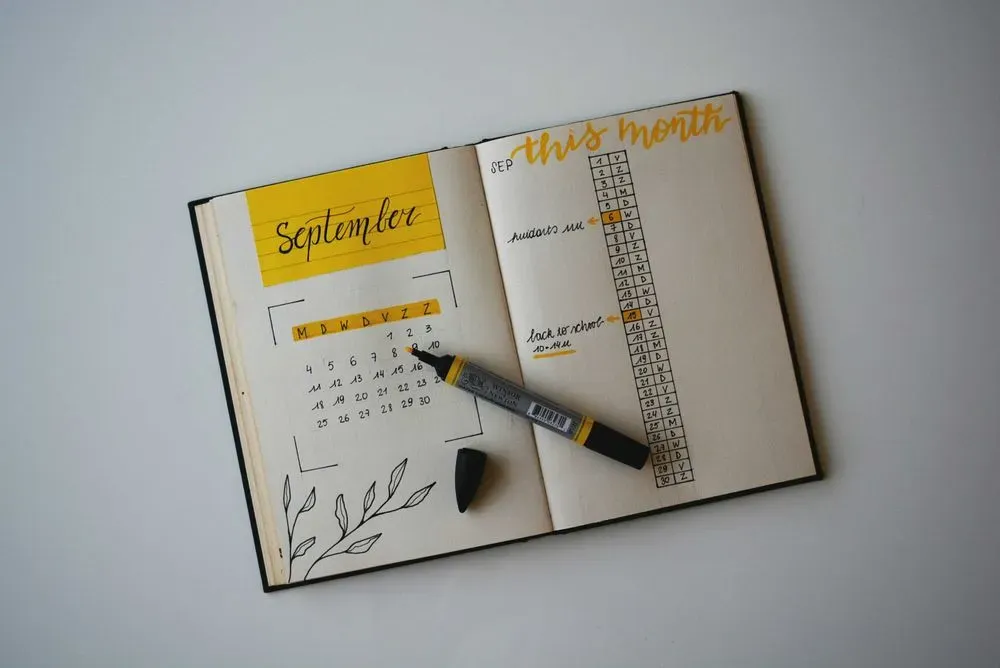In this article, you’ll learn:
For many people today, work-life and homelife have overlapped in a way that they never have in recent history.
Homelife is not a distraction in itself. But when work and home are in the same vicinity, one can become a distraction for the other. This realization led to the birth of coworking spaces as an alternative work environment. But more on this later.
Given that you are a productive employee who wants to do their best and not sacrifice your household responsibilities, we will look at seven simple ways you can manage distractions while working remotely.
#1 Schedule strictly
This first one sounds, and is, militaristic. But for reasons which this piece will eventually unpack, it is best to have a quasi-militaristic attitude about working from home.
Before I get into this, ask yourself: why do we have schedules? In fundamental terms, the answer is
- to manage our day and get tasks done;
- getting stuff done, meaning not having unnecessary distractions to get in the way.
This is why we schedule things for work, stuff for leisure, and tasks for homelife, without inter lapping them.
Sounds simple enough, right? Well, not really. Remember that home life and work-life have been overlapped, so you’ll have to find a healthy balance between the two. Place your domestic duties in between your work-related tasks. But do so carefully so that you don’t multitask between both of them—although there are some occasions where that will be unavoidable.
This is what I meant by quasi-militaristic: setting clear boundaries between your work and your duties at home but being open to some occasions where the two will meet. Remember not to be too hard on yourself on a day when this happens too often. It’s expected, so embrace it.
#2 Eliminate the time wasters in your work-life
Yes, this one sounds a little violent. But given that there will be major distractions to deal with, you don’t want the smaller ones getting in the way.
Think of the small distractions that bother you at work: social media, calling friends, online shopping, texting, and so on. Make a list of all the little things that could distract you, and set them aside while you work.
For example, keep your cell phone in another room if you’re prone to look at text messages. If you keep logging into social media, there are online programs that will not allow you to access those sites for a while.

Getting rid of the obvious time wasting activities will make it easier for you to handle the unlikely workplace time drainers.
#3. Alternate between your home office and a coworking space
One of the perks of the remote working model is that it allows a lot of flexibility. You can leave your home when there are too many distractions and work from a coworking space.With the help of a workspace reservation system, you can easily manage bookings and find spaces that suit your needs.With the help of a workspace reservation system, you can easily manage bookings and find spaces that suit your needs. This way, you’ll benefit from the motivation that comes when creatives work in the same setup. What’s more, you’ll learn a lot from networking with other employees.
Recent coworking studies suggest that “37.9% of coworkers are small to medium-sized enterprises; 27.1% of coworkers are startup teams; 16.6% of coworkers are freelancers, 7.7% of coworkers are entrepreneurs, and 5.5% of coworkers are corporate remote workers.”
More studies also show that creative people thrive when they work from coworking spaces. So if you haven’t yet tried this alternative working environment, you definitely should. You won’t feel isolated to the point where you feel fatigued nor will you feel stimulated to the point of distraction. With a coworking space, you’re likely to hit a sweet spot of productivity and creativity.
#4. Set up an office-like environment
If you’re someone who misses working in their office, working in a different environment is a major distraction in itself. As someone who loves a small, cozy cubicle, it was a hard adjustment to switch to the dining room table.
I would suggest trying to mimic your office space as much as possible to put yourself back in the zone. If this means putting up the same table, flow charts, infographics, office decoration, and lighting, then go for it.
Incorporating technology would be also helpful. There are lots of useful tools to boost the productivity of your remote team. Pics.io DAM is one of them! Take control over all your digital assets and don’t distract on searching for a file for ages.
#5. Set time and space boundaries for children
This one pertains more to those who have the distraction of children while working from home. It’s no surprise that children can be a persistent source of distraction to parents who work remotely.
Of course, parents cannot, and should not, ignore the needs of their children. However, they should communicate to them certain boundaries that will keep the distraction to a minimum. I say minimum because you cannot be distraction-free with children in the house.
Set up physical boundaries around your workspace. This can be done by surrounding the workspace with a small wall, tape, or anything that gives the semblance of a border. Once this is done, explain to your kids that you cannot be disturbed once you are within those borders. For kids below the age of eight, design this in such a way that it looks like a game they can play for which they will get points. If they get a certain number of points, they get a reward, which is positive reinforcement. This stuff works great with children.
However, do explain to your children that they can get your attention should there be an emergency. The only effort you will have to put in is to stay within that zone while you work. Of course, breaks are allowed and should be welcomed, during which you can tend to the kids. This is one creative way to set boundaries with children to keep distraction to a minimum, but it’s not a one-glove-fits-all solution. Find what works for your family dynamics.
#6 Make a checklist of accomplishable items
We’ve all made long checklists of tasks and duties we’d like to get done, or been evaluated on regular employee assessment by a supervisor. Every checkmark is a mini dopamine rush that makes you feel like you’ve accomplished something. But let’s be honest: the longer the checklist, the more intimidating it is. Given this, you will probably get overwhelmed by the number of tasks.
A good friend told me that he writes a checklist every morning before starting his day. In this list, he would write down, at most, three tasks that he would accomplish for the day (a firm emphasis on three)—nothing more, nothing less.

Now, these tasks weren’t simple, nor were they overly laborious. They were accomplishable within the day. The reason for this is because a small list of doable tasks would not be as mentally taxing as either a long list of tasks or a short list of complex tasks.
Having a small number of tasks placed before you, such as three, will be doable. Checking them off one by one will also feel quite pleasing.
Make a list of a few things by using the daily planner app that you would like to have accomplished in your work by the end of the day. Check off the items on your priority list as you go through the day.
That way, you will not only feel that you have accomplished something, but you will have accomplished a good deal of work for the day.
The idea of having a checklist is not to check off items in themselves but to provide you with the necessary focus.
Keeping the number of items short helps you understand that this won’t be overwhelming.
#7 Hit the brakes and take a break
As important as it is to finish your work and meet deadlines, consider that you can work better when you take a refreshing break once in a while.
I found that being sedentary makes me less productive the longer I stay that way. Our bodies need blood flow, and our muscles are crying out for us to move around a little bit.
Take small breaks between work to walk around, power nap, stretch, drink water, have a bite to eat, or perform some leisurely activity to reset your brain for the next round of work.
Why should you plan your breaks? Why not just take them whenever you feel like it? The simple answer is discipline.
Experts suggest that taking planned breaks makes it easier for employees to manage distractions (self-induced distractions, that is). When you have planned breaks, you can feel motivated to accomplish your planned tasks because you have breaks to look forward to. This strategy makes it easier to focus on critical tasks.
Psychologically, this works along the lines of operant conditioning. In simple terms, this means rewarding good behavior and punishing bad behavior.
Consider the fact that you are working hard (good behavior) and giving yourself a break (reward) after working for a certain amount of time.
However, I wouldn’t recommend that, if you are too susceptible to distractions, you punish yourself (take away your break) should you get distracted in the middle of work.
Why? Simply because it’s not wise to associate work with punishment. Over time, you may find yourself hating your work because of its proximity to the punishment (no break).
Instead, try to make the break more rewarding by doing a fun activity. Strengthening the positivity of the break should make the work feel more rewarding and make you less susceptible to self-induced distractions.
Wrap up on how to manage distractions while working remotely
A key takeaway from all this is that distractions are not, and never will be, a 100% avoidable. They were never avoidable in the workplace; surely, they will be unavoidable at home.
Don’t focus on avoiding them as much as being able to control them. At the end of the day, how you manage them will affect your quality of work. We hope these tips will prove useful to you. If you're not currently working remotely but wish to find a remote job, you can start your search right now.
Make your workplace (regardless of whether it’s at home or office) more comfortable with Pics.io. Digital Asset Management will help you manage your digital assets without extra effort, access & distribute your files easily. And you won’t waste your time on searching your media library like forever.
Author




